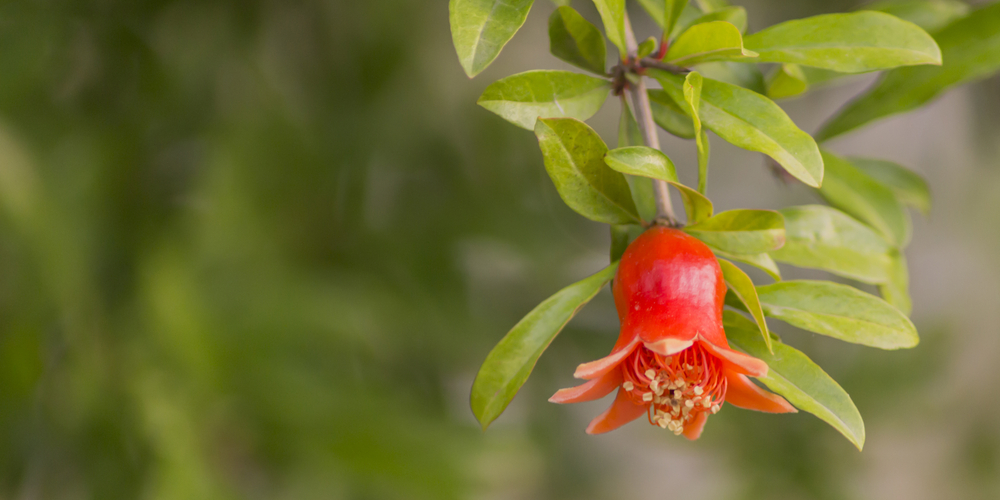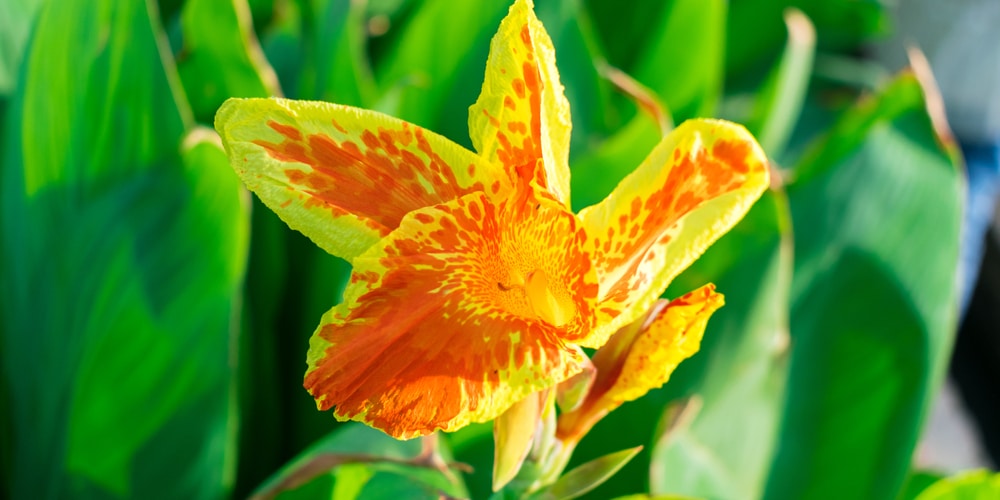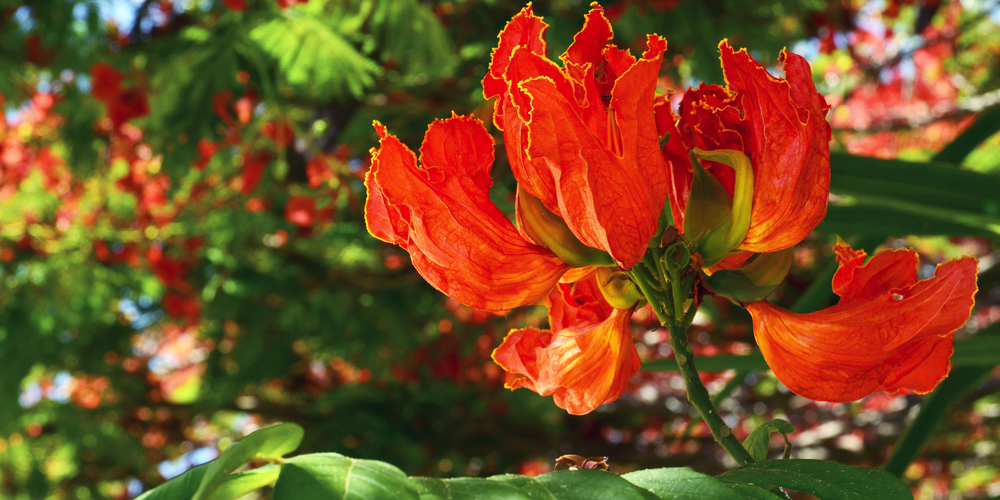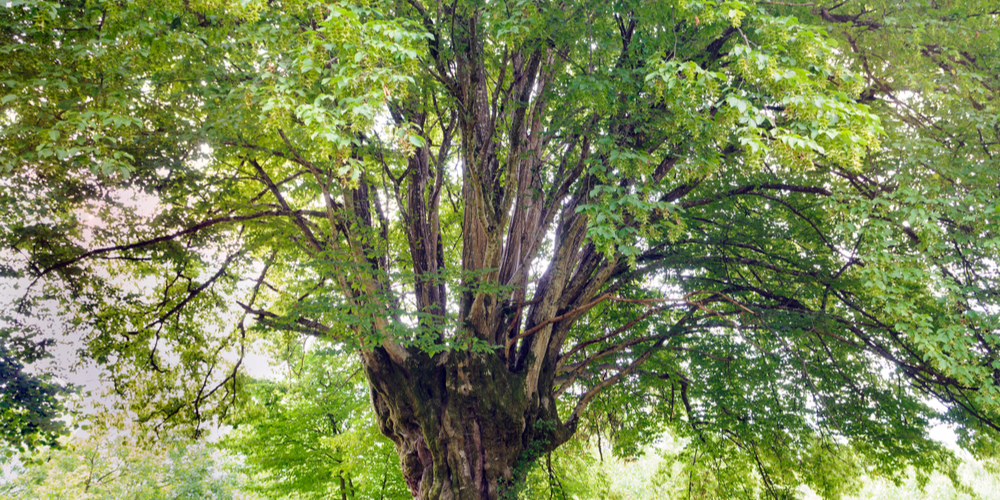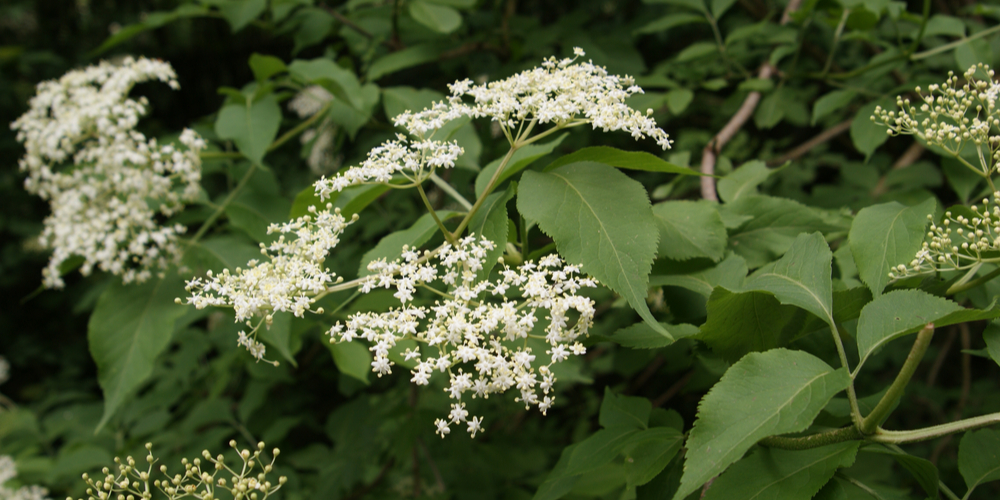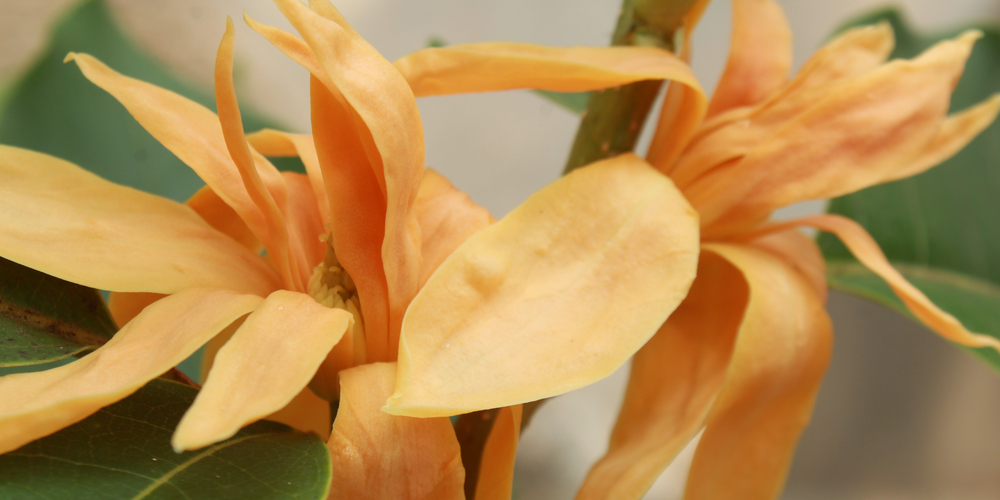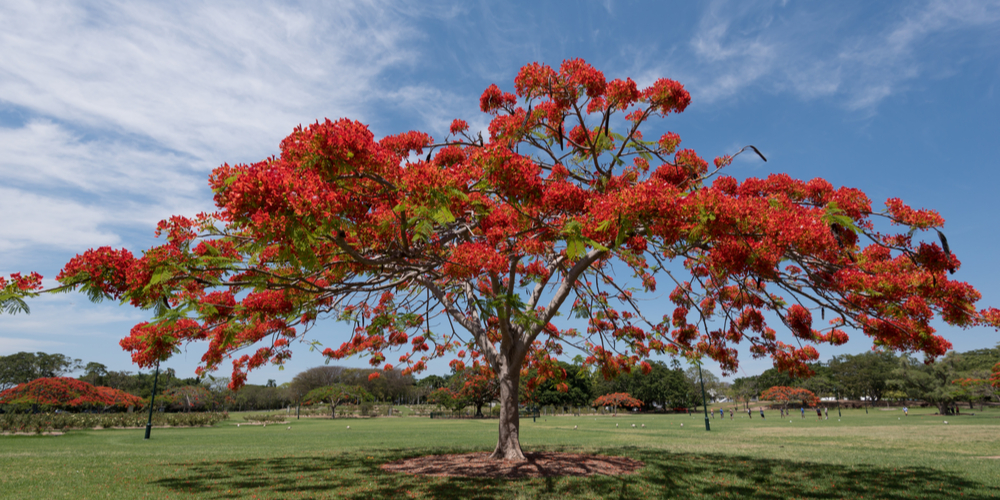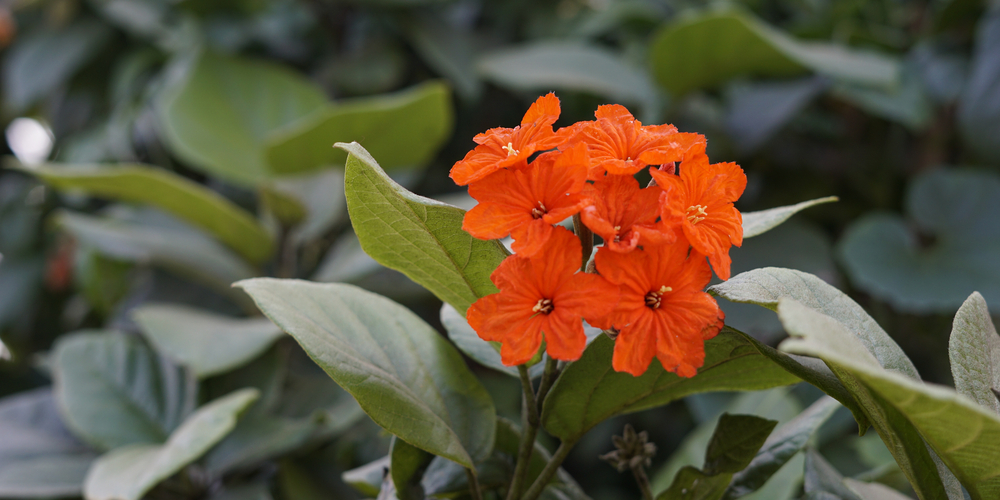Orange is a striking and refreshing color, and gardeners will be spoiled for options when they choose to get a tree that produces orange blooms. Here are 10 trees with orange flowers.
Trees with orange flowers
Pomegranate
How would you like to have a tree that produces both orange flowers and delicious fruits? The Pomegranate is an easy-going plant that grows well in certain regions and ranges from dwarf varieties to tall ones that are around 15 feet tall. They’re evergreen in certain zones and deciduous in colder climates.
Pomegranates are native to India and Iran and grow in zones 7 to 10, particularly central California and Arizona. You’ll need a spot that gets full sun and plenty of fertilizers during its first few years.
Scarlet Wisteria
Scarlet Wisteria stands at a maximum height of 4 meters and is usually found in California. You can add it as a small tree or shrub in your landscape and get rewarded with bright orange flowers that look like hanging fruits.
Growth of your scarlet wisteria will largely depend on the climate, amount of sunlight it gets and the soil type. The tropical species can be grown in the ground or in a container and placed in sunny spots to windows with bright, all-day light. Outdoors, it can grow in zones 8 to 11 while in containers it can be winterized indoors in zones 4 and above.
Canna Lily
One look at cannas and you’ll know they’re made for tropical climates. You’ll probably have to go the extra mile if you’re outside USDA zones 9 or 10, which means it’s more suited for southern areas rather than the cold north.
You can still grow them though- just dig up the roots and store them indoors when first frost arrives and replant them outside when spring arrives.
Vera Wood
Vera Wood, or Bulnesia arborea is an evergreen species that can get quite tall at 40 feet. What’s more, it can put out impressive crowns and assume a rounded and aesthetically pleasing form.
The tree is native to Venezuela and Columbia and can grow in zones 9 to 11. Once established you’ll be greeted with numerous five-petaled orange flowers.
African Tulip Tree
It’s often pointed out that the tulip tree is somewhat a larger version of the tulip plant, mainly because of the cup-shaped flowers. The plant can reach a height of 40 feet and show off large, many-petaled orange flowers.
The African Tulip is native to Africa and parts of the Pacific. When growing this species it’s recommended that you simulate its natural tropical climate in order for it to thrive. Make sure to plant it in the sunniest spot in your house and give it plenty of water during the growing season.
Beginner-friendly, the tulip tree doesn’t pose too many issues in terms of pests and diseases. Furthermore, it grows quite well and quickly as long as it’s in the right environment.
American Hornbeam
If you’re looking for an indigenous tree that sprouts orange flowers then the American Hornbeam should be right up your alley. The deciduous tree grows up to 30 feet tall and thrives in USDA zones 3 through 9.
American Hornbeam can be found in the east and wooded areas. It loves rich and constantly moist soil and partial shade. Those interested can plant the American hornbeam during spring and watch as its leaves turn from green to orange in fall and admire the contrast of its gray-blue bark in winter.
The North American native has very few pests and looks great in any landscape.
Elder Tree
Tecoma stans, or Yellow Elder is a perennial shrub and native to the US. It thrives in zones 8 to 10 and will die back in zone 7, but otherwise can’t be planted in zones 6 and below.
The small tree is relatively more compact than most and boasts bright and cheery orange blooms that are packed tightly together. Take a closer look and you’ll see that they’re shaped like tiny trumpets in a uniform arrangement.
The Elder Tree grows in any soil but it loves organic matter, such as humus or manure. Wait for the soil to dry out before watering again, and don’t worry about it getting thirsty as it’s drought tolerant.
Orange Champaca Tree
Orange Champacas originally came from Indonesia and India but they acclimated quite well in the US. You can usually find them in warmer regions and zones 10 through 12, as well as in containers in lower zones.
Champaca trees are most notably known for its heavenly scented orange blooms that pervade your yard or garden come summer and through autumn. What’s more surprising is that the species isn’t fussy and can grow in part-sun and in virtually any soil medium.
Royal Poinciana
Royal Poinciana are often used as shade trees as it can put out a massive 60 feet crown. It can also grow in any environment as it’s highly resistant to pests and the occasional drought or two.
Come summertime the foliage seemingly turns flaming orange as the buds blossom into flowers. The leaves are also interesting as they appear to be tiny ferns instead of the usual tree foliage.
Royal Poinciana prefers a warm environment and is more suited to grow in zones 9 through 11. You’ll want to put it in a place that gets full sun and well-draining soil. It thrives best in Central America.
Geiger tree
Geiger Tree is believed to be a native of Florida and produces heavy clusters of orange blooms in warm weather.
The small tree is salt-tolerant and grows in any kind of soil, even in sand or alkaline. The only weakness is that it cannot take to cold weather and might die if exposed to winters outside its recommended USDA zones.
Geiger trees are evergreens and grow in zones 10 through 12. South Florida is one of the best places to grow this warm-loving plant. As such, you’ll want to have it in full sun and regular watering when the top few inches of the soil are dry.
Related Article: Best Trees to Plant in Mississippi
